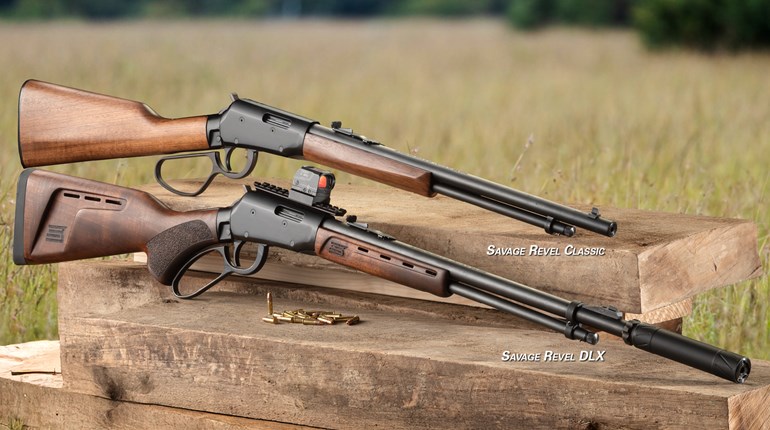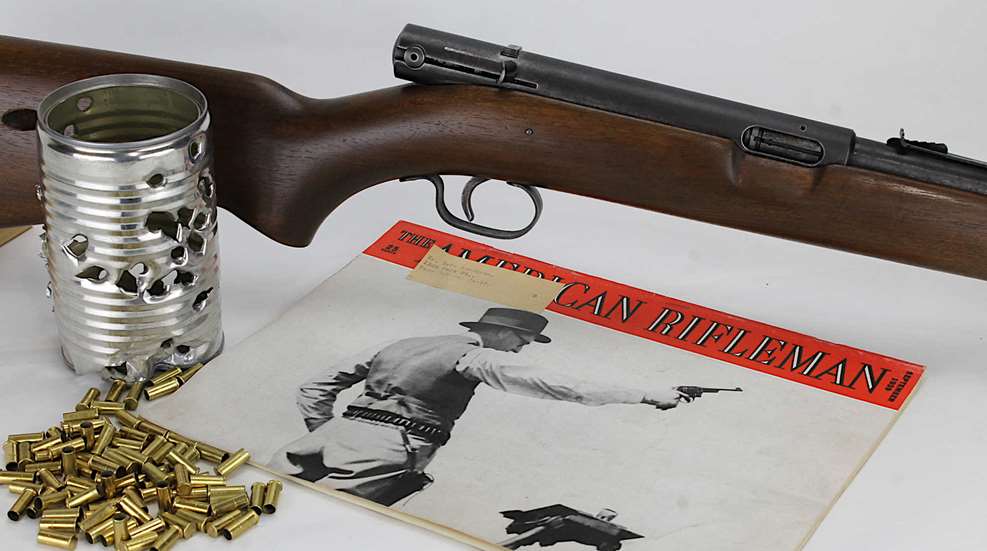
Few shooters beyond Winchester afficionados know much about that company’s Model 74 semi-automatic .22 rifle. Suffering from idiosyncrasies and a design intended to keep manufacturing costs down for cash-strapped shooters, the Model 74 nonetheless is likely the first semi-automatic .22 to be drafted into wartime service for combat.
Winchester introduced the Model 74 in 1939, chambered in .22 Short. The following year, Winchester also began offering Model 74s in .22 Long Rifle, discontinuing the .22 Short version in 1952 and ending Model 74 production altogether in 1955 after manufacturing about 406,574 rifles.

“Inelegant” and “utilitarian” are apt one-word descriptions of the Model 74’s physical appearance. A child of the Great Depression and designed at a time when semi-automatic rifles were hardly as ubiquitous as today, Winchester can be forgiven for eschewing embellishments like a logo butt plate or checkering the pistol grip and fore-end. Manufacturing rifles—or any other consumer product—is always a balancing act in minimizing production cost while still making the product appealing to the buyer. The no-frills Model 74 is mute testimony to the sensibilities of frugal Depression-era buyers desiring a semi-automatic .22.
The Model 74 is one of those .22 LR rifles featuring a magazine tube in the buttstock that loads through a hole in the right side of the stock when the inner magazine tube is retracted from the butt. Magazine capacity of the Model 74 Sporting Rifle is 14 rounds of .22 Long Rifle ammunition; the .22 Short version, and a slightly garnished .22 Short Gallery Special model, holds 20 rounds. According to the 1955 Gun Digest, “… the standard model holds 20 Shorts or 14 Long Rifles …” implying the .22 LR-chambered Sporting Rifle can function with the shorter, less powerful cartridge.
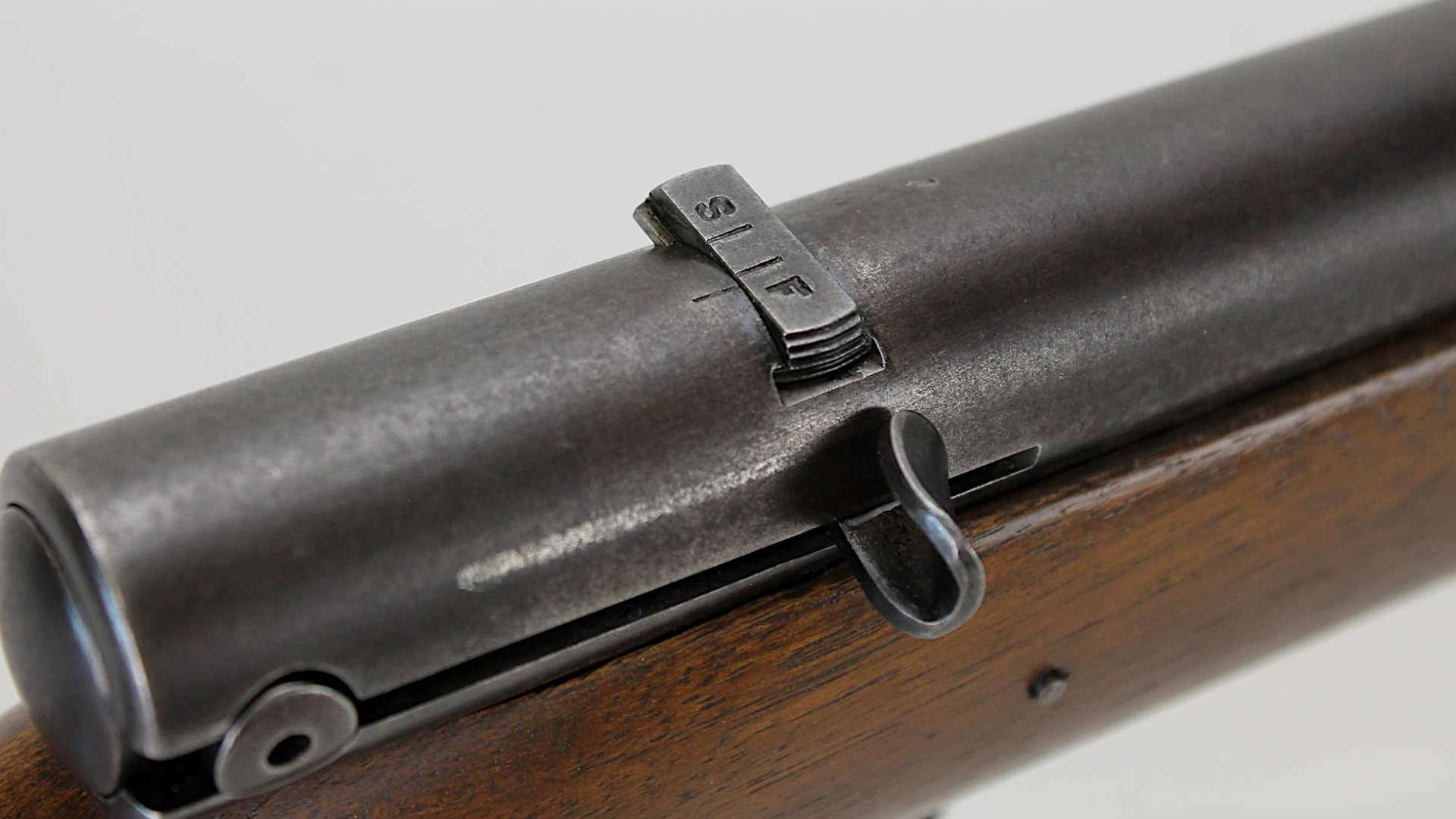
Don’t cock on “Safe”
A post-war rifle, the serial number on this particular Model 74 indicates a 1946 manufacture. Condition is a solid NRA Very Good; it is fully functioning and has all original parts. The action’s straight cylindrical profile is interrupted by a horizontally sliding safety unique to the Model 74, which we’ll get back to in a minute.
Straight-grained and straight-combed, the semi-beavertail stock has just enough drop at the heel that the shooter’s eye naturally aligns with the rear sight when quickly brought to the shoulder. Winchester’s Model 74 is a no-petticoat, git ‘er done tool, the kind of rifle a farmer might keep loaded and standing behind the kitchen door to opportunistically dispatch varmints attempting mayhem at the henhouse. Nonetheless, the quality of its materials is evident in its lack of soft alloys or of the plastics of the day—hard rubber, gutta percha and the like. The steel butt plate is checkered but, like the steel trigger, trigger guard and rear sight, is stamped rather than milled. Two wood screws attach trigger guard to stock, and a single takedown screw further forward does the same for the barreled action.
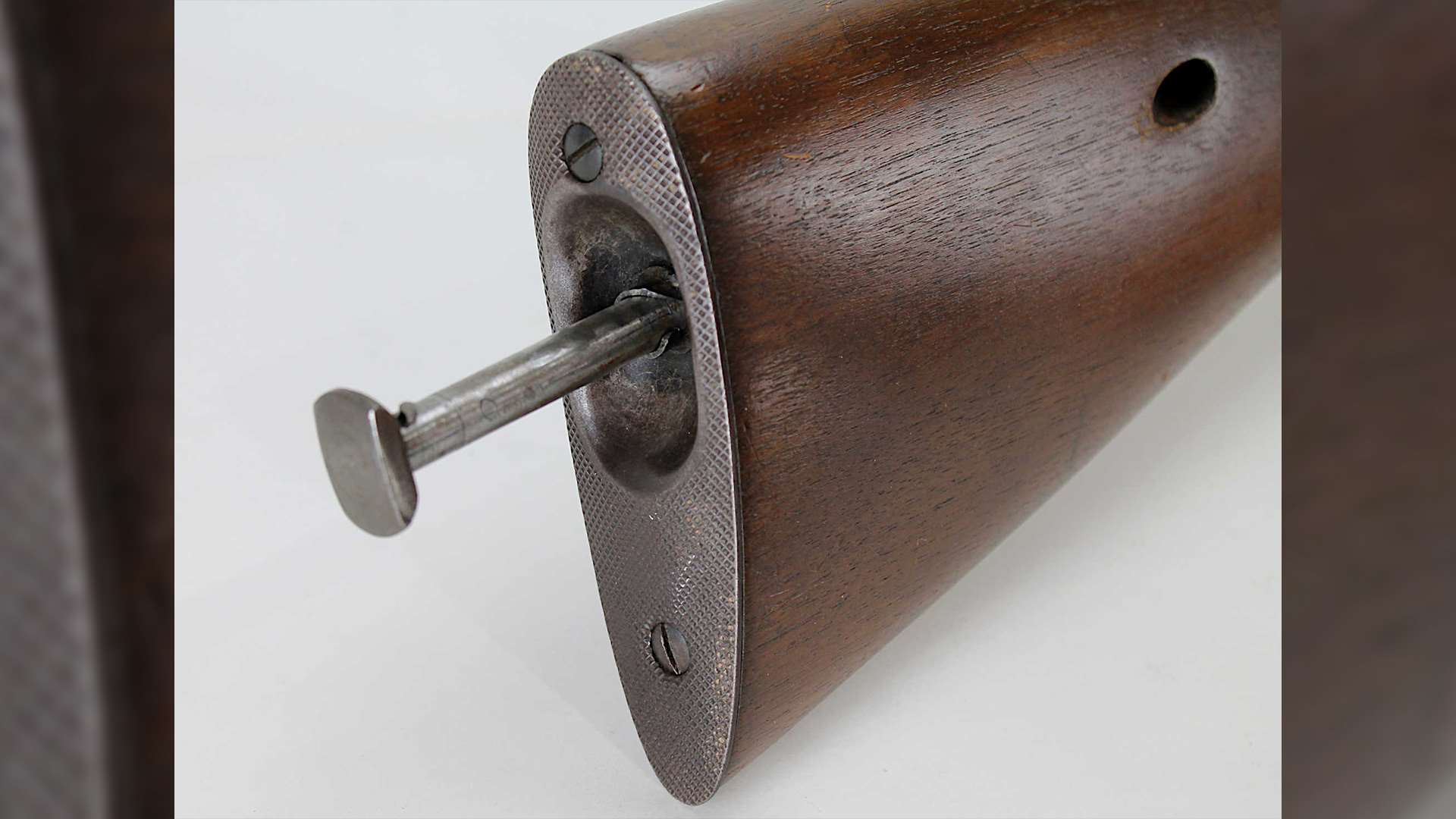
A bit unusual, the trigger is not attached to the action; it is a simple lever pivoting on a transverse pin passing through the stock, the ends of which are visible on each side below the action. An extension on the trigger trips a sear to release the firing pin. The design has a sniff of cheapness about it that can be felt in pressing the trigger.
A tiny hole above the ejection port accommodates a pin that holds the cartridge guide in place. There is no automatic or manual bolt hold-open. Removing the bolt first requires uncocking by dry firing, according to the owner’s manual. As we all know, dry firing most .22s typically can cause the firing pin to peen the chamber face and/or to damage or eventually break a firing pin. But as there is no damage to this rifle’s chamber face or firing pin, and the owner’s manual instructs the user to dry fire before disassembly, dry firing to uncock the action is apparently acceptable, though routinely dry firing for practice may not be wise. Better still is to insert a fired case, dummy round or “snap cap” into the chamber before uncocking by dry firing.
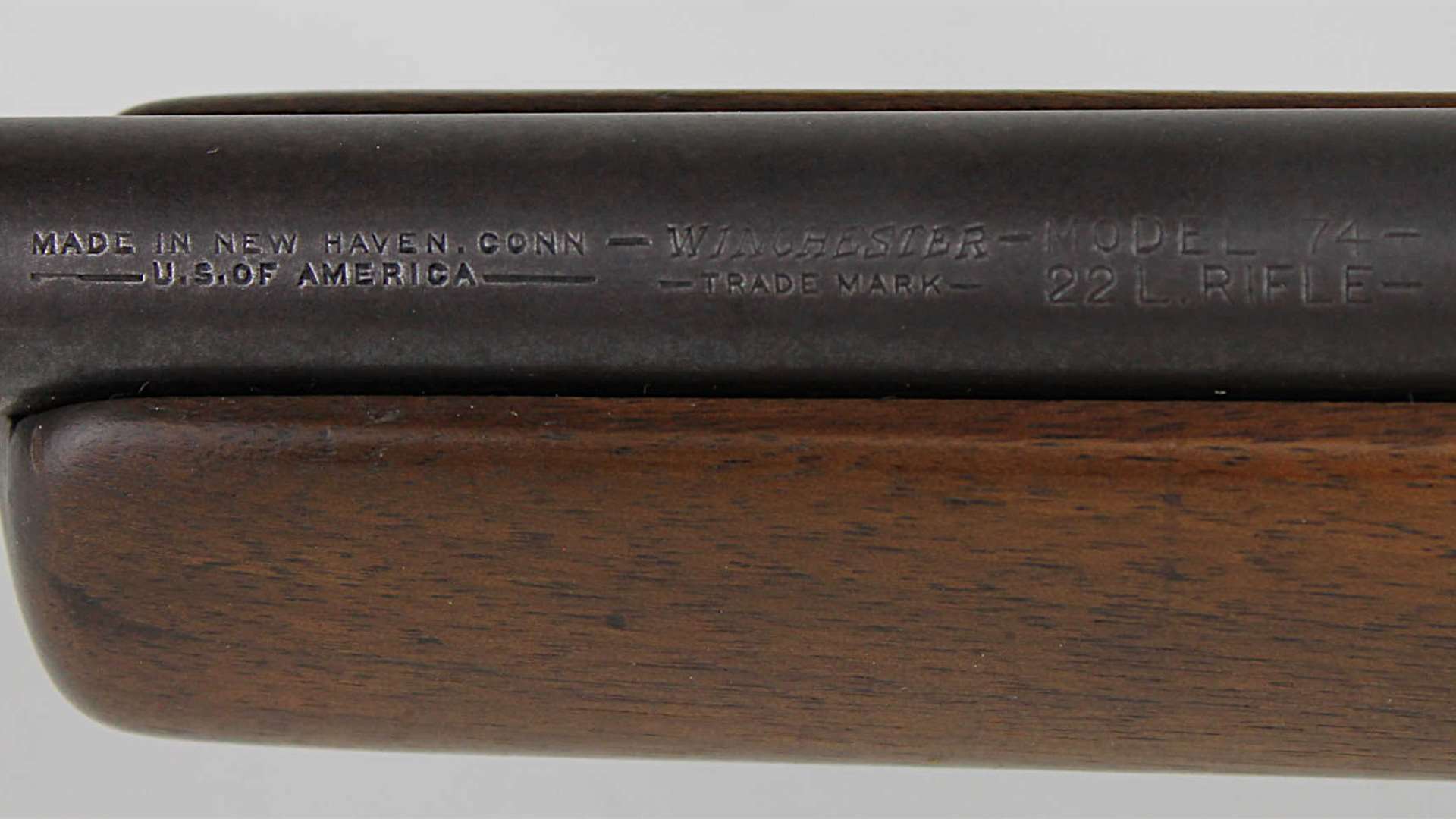
Those lacking mechanical knowledge of the Model 74 are prone to breaking it, and replacement parts are, to understate it, no longer readily available. Attempting to cock the action by pulling backward on the bolt handle while the safety is engaged is a big no-no, as the bolt can become entangled in the safety detent spring and the action rendered inoperable. Inexpert disassembly can then damage the spring, and good luck finding a replacement.
Being somewhat rudimentary, the rifle’s trigger breaks at roughly six pounds as measured with an electronic gauge, after a spongy take-up that does nothing for accuracy. Curious about that 1955 Gun Digest comment about .22 Shorts in the “standard rifle,” I dropped some .22 Shorts into the magazine to see if the Model 74 will indeed feed and function reliably with the lesser round. It did not, but it performed flawlessly with both standard velocity and high velocity .22 LR ammunition.
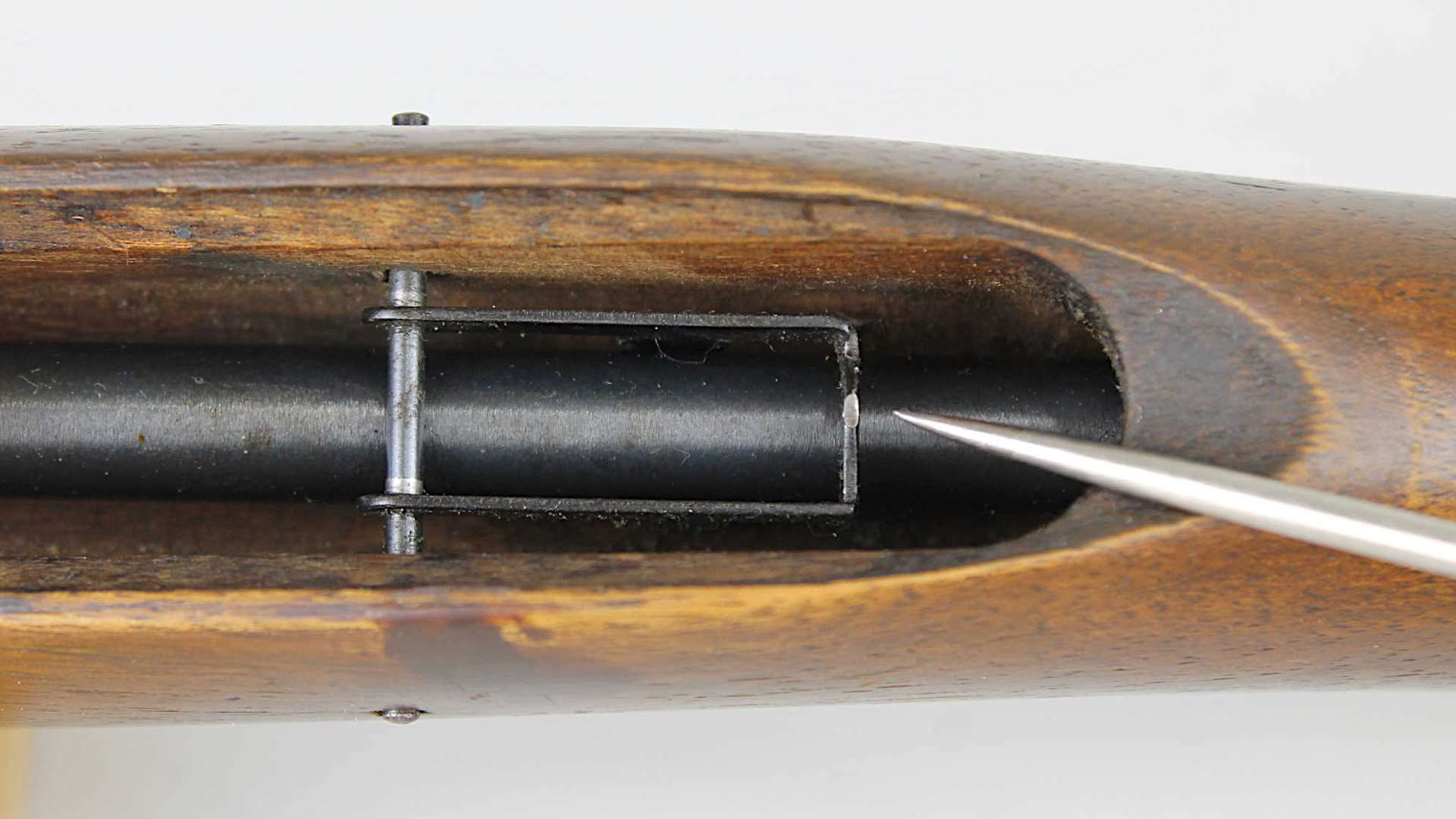
Assassin? Maybe not
There appears to be little written about the humble Model 74, compared to Winchester’s monsters of success such as the Model 1894, Model 70 and M1 Carbine. In the September 1939 American Rifleman “Dope Bag” column, F.C. Ness said the most appealing among new autoloading plinking rifles at that time “… are the M-74 Winchester and the M-241 Remington because they are built to handle that cheap little low-power plinking load, the .22 short rim fire.” He offered no further commentary on it. Even for collectors, among the 225 pages of the “Winchester Pocket Guide” (Ned Schwing, Krause Publications, 2004), the Model 74 entry takes up only a half-page with perhaps 100 words, and a second half-page with remarkably low listed values. “The History of Winchester Firearms” (Dean K. Boorman, Lyons Press, 2001) ignores the Model 74 completely. Winchester’s Model 74 almost seems cloaked under some kind of firearms witness protection plan that includes historical obfuscation.
Coincidentally, World War II “officially” began with the Nazi German invasion of Poland the same month Ness published his passing comment in American Rifleman. Though one might reasonably expect that Model 74 production ceased during World War II, Winchester only missed turning out the rifles one year during that global conflict, 1943. A little-known bit of history of the rifle is that perhaps 600 went over to England as “Lend-Lease” guns, many of which the British fitted with Parker-Hale “sound moderators”—suppressors—and scopes. (A number of Lend-Lease Winchester Model 69A bolt-action .22s were similarly borrowed-leased and suppressed by the British). Many who do know of that history believe the British Special Air Service (SAS), the equivalent of its contemporary American Office of Strategic Services (OSS, which later morphed into the present Central Intelligence Agency), used the suppressed rifles for assassination. But history has no reliable record of them ever being so used. Or of being fired in action at all.
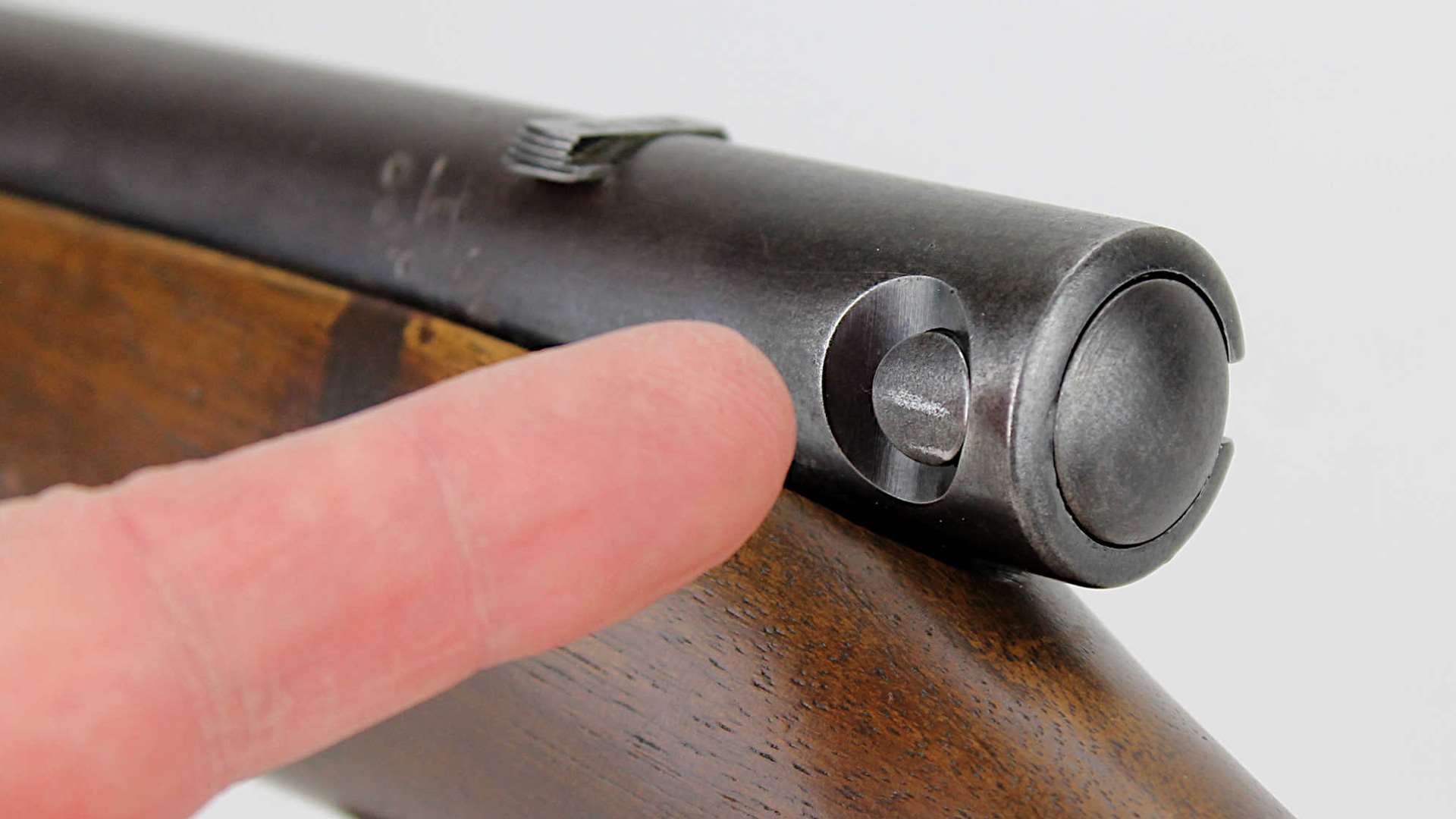
Rather, during or perhaps following the dark days of World War II when it appeared Nazi Germany would invade England, the British issued the suppressed rifles to paramilitary guerrilla “Auxiliary Units” of civilians, apparently with the intent they be used to create harassment disruption in German-held English territory, should the invasion occur. The suppressed rifles were perhaps to be employed in killing sentry dogs and sentries, and perhaps also to surreptitiously provide forage to Auxiliary Unit members hiding in their Operational Bases behind enemy lines.
That’s a lot of “perhapses” but, again, though some of the British rifles survive and can be found at auctions today, ready information on their actual usage remains murky and suffused with considerable misinformation. That’s unsurprising, given the secretiveness of the Auxiliary Units and that German spies and sympathizers were more common in England than many today realize. What is definitively known is that the rifles went over, and they were suppressed, scoped and issued to Auxiliary Units. For more on that history, images of the suppressed Model 74 and the British perspective, click here.
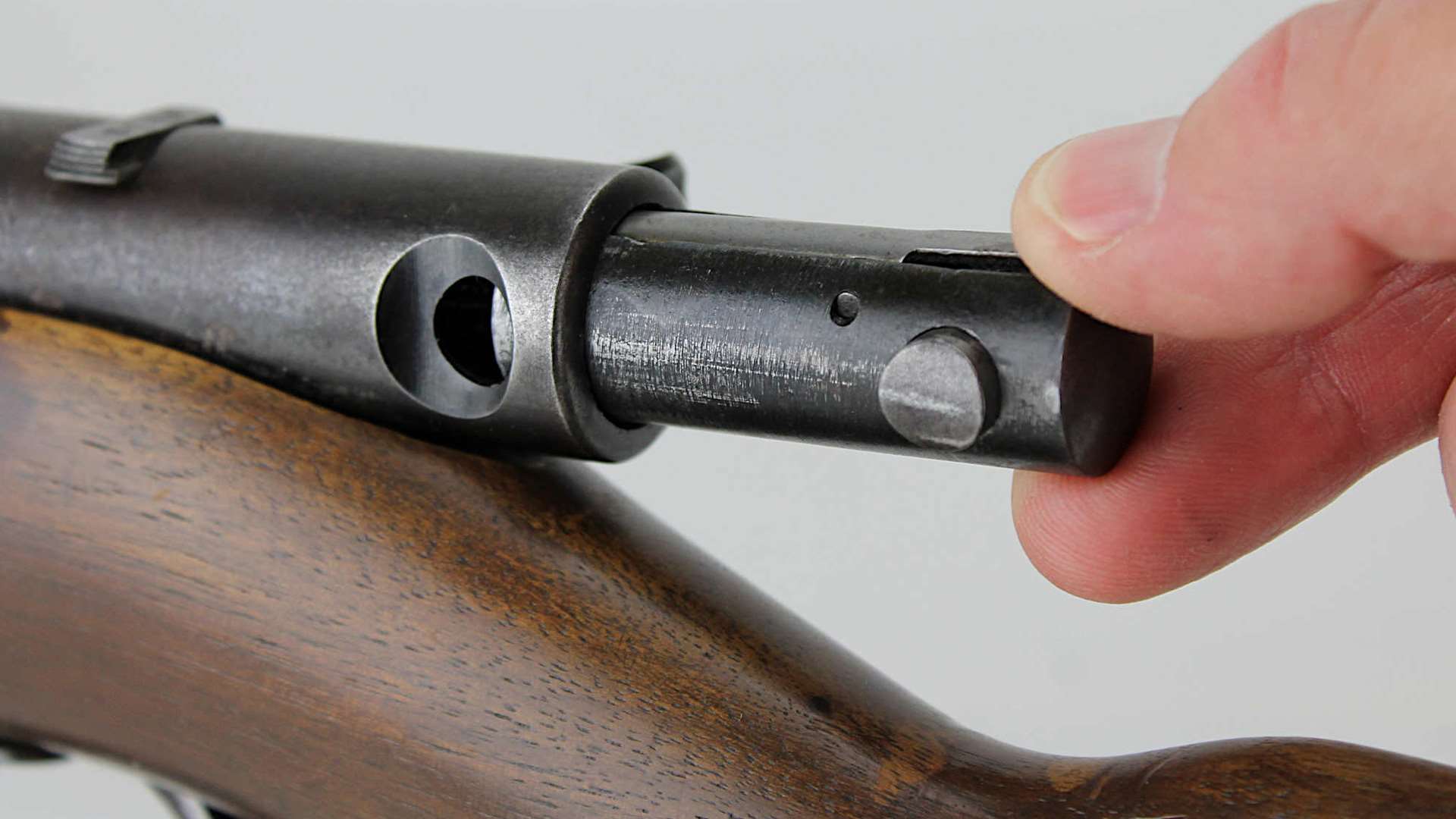
Reasonable value
Models 74s with British markings and threaded muzzles can fetch $400 to $800. Genuine Lend-Lease Model 74s with “sound moderators” are different critters that finally get collector attention, with four-figure auction prices. But there is little interest in common Model 74s today, apparently even among Winchester collectors. A check of online prices showed that, though asking prices are in the $350 to $700 range, sellers are apparently actually realizing $216 to $400, depending on condition and whether it is scoped. Winchester also produced a Gallery Special Model 74 in .22 Short that included a shell deflector and some chrome trim, and these fetch about twice that of the Sporting Rifle shown here. These values closely follow those printed in the aforementioned “Winchester Pocket Guide” published more than 20 years ago. In 1939, Model 74s sold for about $19, which equates to about $403 today, so one could argue the rifle has reasonably held its value over 80-plus years.
It appears then that the Model 74 soldiers on in the role for which it was originally designed, an appealing plinker of low-cost ammunition that Ness first described in 1939. While not exactly high praise, like the rifle itself, it is perhaps adequate.















